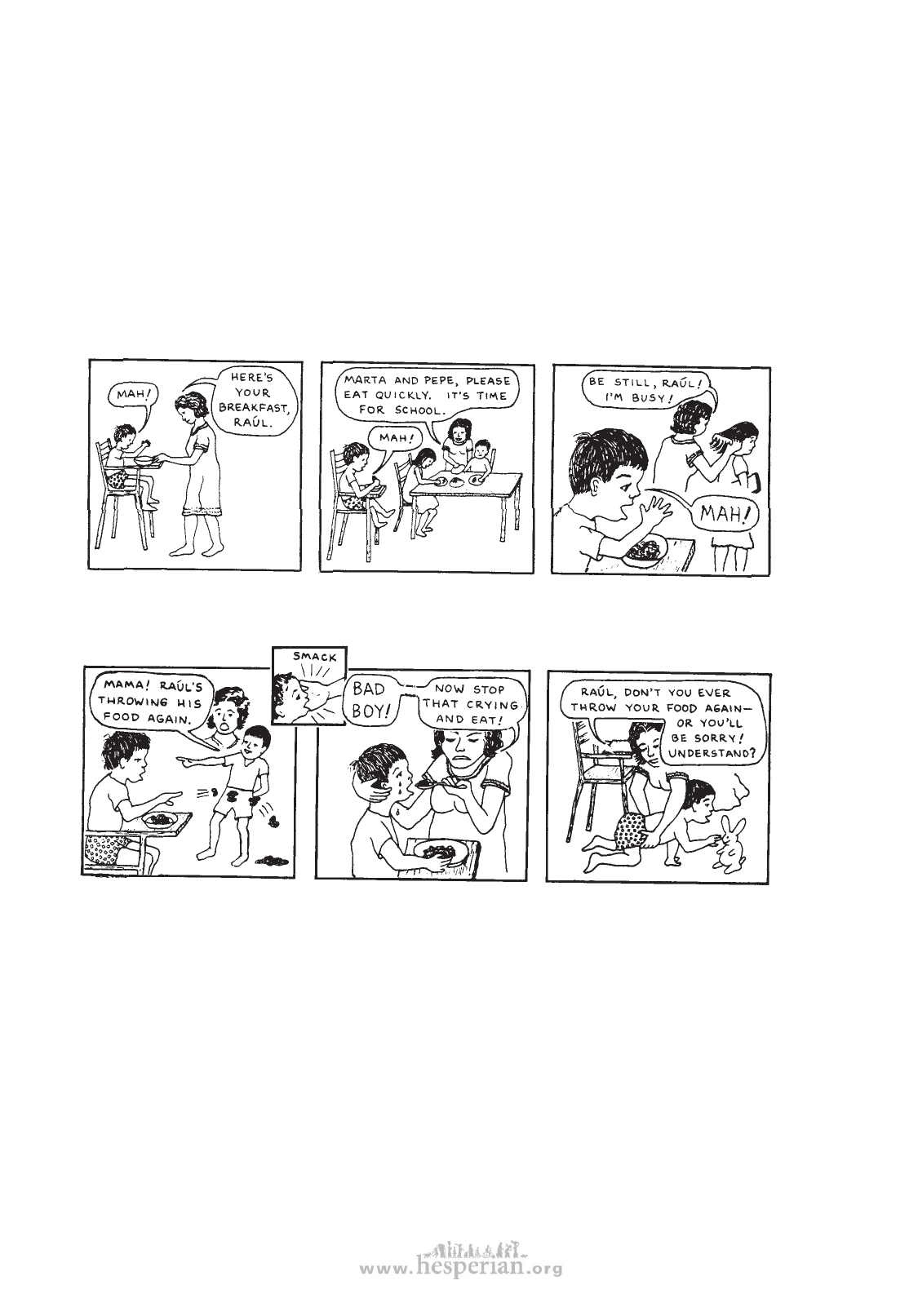
350 chapter 40
A BEHAVIORAL APPROACH TO LEARNING AND
IMPROVED BEHAVIOR
Step 1. Observe the circumstances of your child’s behavior.
To help your child to behave more acceptably, start by carefully observing what is
happening around and with the child when he begins his acts of disturbing behavior. Observe
carefully for a week or two. To notice patterns more clearly, it helps to write down your
observations. Try to make your records clear, specific, and simple. Take note of everything
that might lead to your child’s acts of ‘bad’ behavior, and what he seems to gain from it. For
example, Raúl’s mother might write these notes:
“I put him in his chair, and
gave him food.”
“Then I got the older children
ready for school.”
“He kept calling to me, but I
was busy and told him to keep
quiet.”
“Raúl began to
throw his food!”
“I slapped “He started crying. To quiet
him.”
him, I fed him his breakfast.”
“Then I put him down to play
with his toys.”
Step 2. Based on your observations, try to figure out why your child behaves as he does.
Look for answers to these questions:
• What happens that leads to or ‘triggers’ his unacceptable behavior?
• Is his behavior partly due to confused or unclear messages from you or other
persons?
• What satisfying results does his behavior produce that might make him want to do it
again?
• Is the child’s behavior partly from feeling afraid or insecure?
Disabled village Children